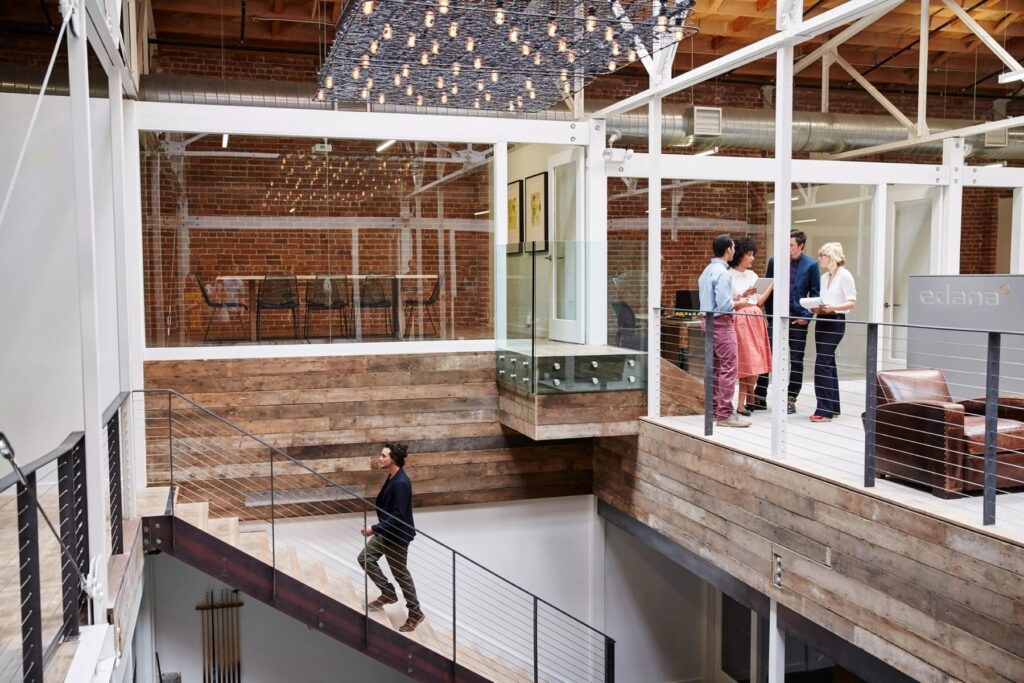Summary – From the planning stage, eco-design is essential to contain digital emissions (3–4% of global emissions) and control indirect costs (energy, maintenance). It relies on environmental indicators (kWh, kgCO₂, data volume), lean technical choices (optimized code, modular and serverless architectures, open-source solutions) and green hosting. Solution: formalize an eco-design charter in the requirements, integrate these KPIs into the backlog and steer each iteration through CSR governance to ensure sustainable performance.
As a key pillar of sustainable IT, digital eco-design (or sustainable software design) involves integrating environmental considerations from the initial conception phase of a software product to reduce its ecological footprint (energy, materials, etc.). In a context where digital technologies already account for approximately 3–4% of global greenhouse gas emissions, this approach has become essential. Planning for digital sobriety as early as the specifications phase maximizes project efficiency while controlling indirect costs (such as energy and maintenance). These savings can then be reinvested into innovation and business features.
Why integrate eco-design from the planning stage of a software project
Environmental impact is determined from the very first lines of the specifications.
Many environmental impacts are locked in during the design phase. The French Chamber of Commerce and Industry (CCI) emphasizes that “it is important to integrate this approach very early, as many impacts are decided from the design phase.” For example, the amount of data collected or the complexity of a feature will directly influence energy consumption during usage. It is therefore crucial to define environmental indicators early on (such as kWh consumed, kgCO₂ emitted, data volume, etc.) and to set ambitious targets. Concretely, integrating eco-design into planning means specifying how to calculate these indicators and setting related goals.
In Switzerland, the national Digital Strategy recommends extending the lifespan of digital solutions from the design stage—see the official report from the Swiss Confederation. For instance, in a project involving a cantonal administration portal, the team could measure the energy impact of new features on servers or opt for a low-impact local hosting solution (a Swiss data center powered by renewable energy).
Reducing energy costs also translates into a better ROI: lighter code lowers server consumption and, therefore, operating expenses. According to the RGESN, applying these principles from the start can reduce the software’s footprint by a factor of three.
Additionally, the approach enhances user experience (faster journeys) and brand image (competitive edge). Ultimately, starting with eco-design during the planning phase leads to long-term gains in operational efficiency.
Sustainable Technologies and Architectures: Levers for a Reduced Impact
The right technical decisions provide a solid and lasting foundation.
Efficiency stems from thoughtful technical and architectural choices. This means favoring optimized code, lightweight frameworks, and high-performance databases to minimize resource consumption. For instance, reducing network calls, compressing images, and caching static content can significantly lower server load. The architecture must also be modular and scalable: using containers or serverless services allows automatic adjustment of capacity based on actual needs, thereby avoiding infrastructure oversizing. By incorporating these practices from the design phase, a durable and long-lasting project foundation is established.
Green Hosting Providers and Data Centers
Choose providers committed to sustainability—those powered by renewable energy sources (hydroelectric, solar, wind) and certified by recognized environmental standards (ISO 14001, Green IT, etc.). In Switzerland, Infomaniak exemplifies this commitment with a data center that reuses 100% of its electricity to heat up to 6,000 homes. Additionally, it employs external air cooling without active air conditioning, dramatically reducing energy consumption related to temperature regulation. This kind of infrastructure proves that technological innovation and environmental responsibility can coexist harmoniously.
Scalable and Adaptive Architectures
Scalable infrastructures like microservices, containers (Docker, Kubernetes), or modular cloud platforms (AWS, GCP, Infomaniak Public Cloud based on OpenStack) allow computing and storage power to be dynamically adjusted according to usage peaks. This prevents overprovisioning, which is both costly and energy-intensive. Serverless computing (such as AWS Lambda) is another effective path: resources are consumed only when the code is actively executed. This enables higher energy efficiency and more precise resource allocation aligned with real usage.
Optimized Code and Resource Usage
A high-performance site or application relies on lightweight, readable, and well-structured code. Regular analysis using tools like EcoIndex, Lighthouse, or WebPageTest—combined with server log audits and network request monitoring—helps identify unnecessary resources. Compressing images (using WebP, AVIF), minifying CSS/JS scripts, and leveraging local or system fonts significantly reduce page weight. Practices like lazy loading, code splitting, and optimizing the critical rendering path also enhance the platform’s environmental footprint.
Open Source and Sustainable Software Solutions
Well-maintained open-source software (CMSs, frameworks, libraries) helps avoid the rapid renewal cycles enforced by proprietary vendors. Their open documentation encourages broader understanding and collaboration, extending the lifespan of solutions and facilitating ecological audits. For example, choosing PostgreSQL over closed systems, or CMSs like Strapi, Ghost, or WordPress in headless mode, offers better control over performance and sustainability. Moreover, the open-source community plays a key role in vulnerability detection, sharing best practices, and continuously improving efficiency.
Edana’s Eco-Responsible Architectural Approach
At Edana, we favor proven and modular technology stacks. Our architectures are designed with scalability and digital sobriety in mind, often integrating lightweight frameworks such as SvelteKit or Next.js and modern JavaScript runtimes like Node.js or Deno. These choices allow for progressive loading, better memory management, and superior energy efficiency.
We frequently host our projects on Infomaniak due to its alignment with our RSE (CSR) values—its ethical cloud is perfectly in line with our principles. We also work with platforms like Vercel or Cloudflare Pages, optimized for static and distributed applications.
Our databases are selected for their robustness and efficiency: PostgreSQL for complex projects, SQLite or Redis for microservices. Our entire stack is designed to minimize heavy dependencies and maximize component reusability. As a result, every project remains adaptable, durable, and resource-efficient—without compromising on performance, security, or maintainability.
More broadly, we avoid bloated, poorly optimized platforms with a high carbon footprint. These solutions often come with expensive, inflexible licenses and lock businesses into complex infrastructures that are hard to evolve and misaligned with sustainable and agile approaches.
Edana: strategic digital partner in Switzerland
We support companies and organizations in their digital transformation
Project Governance and Collaboration: Aligning Stakeholders Around CSR Goals
Eco-design also relies on a collaborative, measurable, and well-aligned project approach.
Eco-design is, above all, a matter of organization. All project stakeholders—management, Product Owner, developers, end users, and the CSR team—must share the same environmental impact goals. To achieve this:
- Draft an eco-design charter at the project’s outset. This document can define concrete commitments by the team (e.g., minimizing API calls, optimizing front-end assets, reducing technical debt, etc.).
- Integrate environmental impact indicators into steering committees (e.g., CPU/memory usage, page weight, estimated emissions per user). These metrics should be tracked just like business KPIs.
- Add a “sobriety review” at each key step: sprint reviews, releases, or functional arbitrations. Systematically ask: “Does this feature justify its environmental cost?”
In Switzerland, the Canton of Geneva joined the “Responsible Digital” label as early as 2021, formalizing its commitment to digital sobriety. This green governance includes regular reviews: every development decision is analyzed through the lens of its “carbon cost.” For instance, an overly resource-intensive feature might be:
- postponed,
- simplified,
- or offset by optimizing another component.
💡 Tip for IT project managers: use a cost/benefit/impact matrix to prioritize features.
At Edana, we recommend treating eco-design as a flexible framework, adaptable to your context, organizational maturity, and project constraints. This may include:
- Integrating eco-score criteria into the product backlog,
- Raising developer awareness through workshops or “eco-challenges” (e.g., building a page under 200 KB),
- Using evaluation tools like EcoIndex, GreenFrame, or Scaphandre in CI/CD pipelines,
- Including energy performance in the acceptance criteria.
By embedding environmental responsibility into governance and collaboration practices, you enable your teams to make informed and impactful choices—without slowing down your delivery cycles.
Measure, Optimize, Iterate: Eco-Design Is a Continuous Process
Designing with sobriety also means learning to correct and improve.
Once software is in production, the eco-design journey doesn’t end—it evolves. The first step is to measure real-world impact using operational KPIs (such as server electricity consumption, CO₂ emissions from usage cycles, response time, etc.). Monitoring tools (log analysis, automated load testing, EcoIndex, etc.) help continuously gather this data. For example, it’s possible to generate detailed monthly reports on energy usage by each feature. These metrics often reveal new opportunities for savings: underused pages or unnecessary components can be removed.
Then comes iteration: each new release incorporates lessons learned from the previous one. Features are adjusted, and resource use is continuously optimized. For instance, if a CPU-intensive module is rarely used, it may be deactivated. The goal is to steadily reduce the service’s footprint over its lifecycle. According to consulting firm Synapsys, a 30–50% reduction in digital footprint over three years is achievable by conducting quarterly reviews and producing annual sustainability reports.
Several Swiss examples highlight this continuous approach. The Romandy-based startup Canopé creates carbon reports for IT infrastructures, showing that on average, 80% of the total footprint comes from hardware manufacturing and end-of-life processing. Knowing this encourages organizations to extend equipment lifespans and recycle devices. Meanwhile, initiatives such as Geneva’s “Digital Cleanup Day” regularly promote the deletion of obsolete data and applications.
Eco-Design: A Driver of Innovation and Differentiation for Digital Projects
Eco-conscious software design is a competitive advantage.
Eco-design encourages organizations to rethink digital solutions for greater simplicity and robustness. For example, streamlining the user journey (fewer pages and requests) not only lightens server load but also improves responsiveness.
From a business perspective, numerous studies confirm that CSR (Corporate Social Responsibility) commitments enhance brand reputation, attract top talent, and ease access to funding. By treating environmental performance as a key metric, companies can fully leverage this differentiating factor.
Since every project is unique, there’s no one-size-fits-all formula. The most impactful results come from aligning technical best practices, business goals, and an RSE (CSR) vision to build responsible and durable software solutions.
At Edana, we support our clients with this tailored approach. Thanks to our agile, open source, and security-focused mindset, every application we build benefits from a sustainable design aligned with its specific challenges. The ability to blend digital innovation with social and environmental responsibility is a powerful differentiator in today’s market.
Launch a Sustainable Digital Project: Talk to Our Experts
At Edana, we are a team of software engineers, enterprise architects, and digital transformation specialists who believe that eco-design is more than just an environmental concern—it’s a powerful lever to build digital solutions that are sustainable, high-performing, and aligned with today’s real-world needs.
By integrating the principles of digital sobriety from the project’s earliest stages, we design tools that are lighter, more efficient, and environmentally responsible—while also enhancing user experience and optimizing the technical and human resources involved.
Whether you’re developing a new business application, redesigning an e-commerce platform, or modernizing an existing information system, we seamlessly integrate your CSR criteria to deliver innovation, performance, and positive impact.
Get in touch—every project starts with a simple, informal conversation with one of our digital experts.







 Views: 2279
Views: 2279